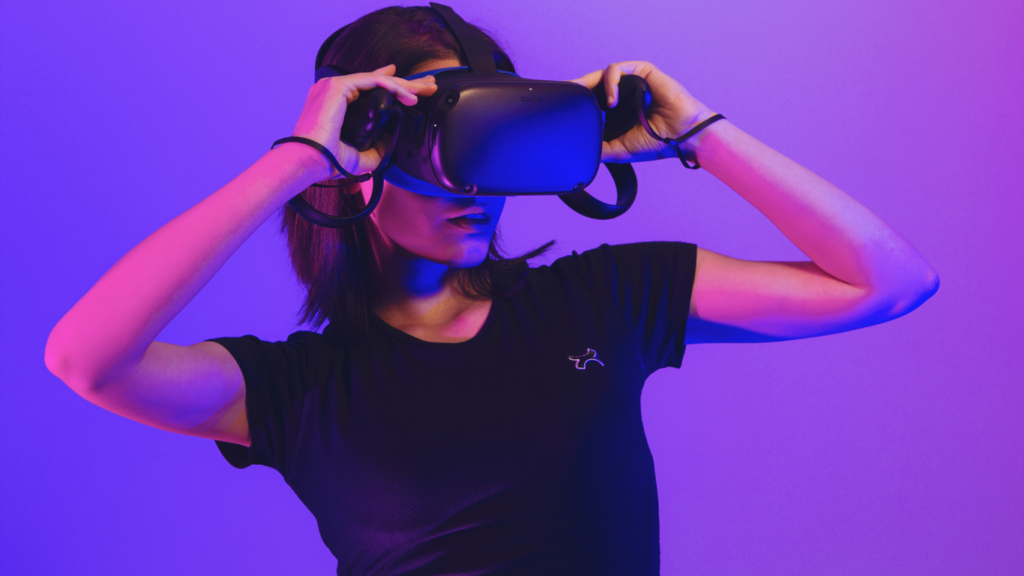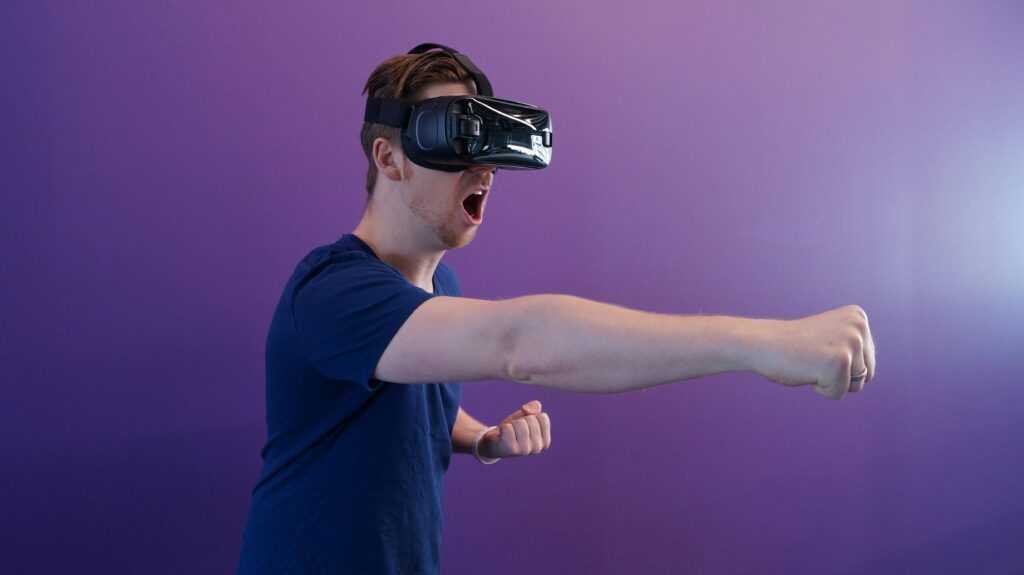Excited to dive into the cutting-edge world of virtual reality? In this article, I’ll be exploring the latest releases of VR headsets, uncovering their innovative features and capabilities. From immersive gaming experiences to virtual travel adventures, these new devices are pushing the boundaries of what’s possible in the realm of VR technology.
Overview of VR Headsets
Exploring the latest VR headset releases reveals a landscape of cutting-edge technology that is reshaping the virtual reality experience. These devices are not just gadgets but windows to immersive worlds, transforming how we perceive and interact with digital environments.
The evolution of VR headsets has brought us closer to lifelike simulations, interactive storytelling, and dynamic gameplay.
Oculus Quest 2: Revolutionizing Wireless VR
Oculus Quest 2 sets a new standard for wireless VR, offering a high-resolution display and powerful processing capabilities. It eliminates the need for external sensors or wires, providing a hassle-free and portable VR experience.
With its advanced tracking system and ergonomic design, Oculus Quest 2 delivers seamless gameplay and immersive content consumption.
Sony PlayStation VR: Bridging Gaming and Virtual Reality
Sony PlayStation VR bridges the gap between traditional gaming and virtual reality, bringing popular gaming titles into the VR realm. It offers a diverse library of games and experiences, leveraging the existing PlayStation ecosystem.
With its compatibility with PlayStation consoles, Sony PlayStation VR delivers a seamless transition for gamers seeking immersive VR adventures.
HTC Vive Pro 2: Setting the Bar for VR Enthusiasts
HTC Vive Pro 2 caters to VR enthusiasts and professionals with its high-fidelity display and precise tracking capabilities. It boasts industry-leading resolution and refresh rates, enhancing visual clarity and reducing motion blur.
The ergonomic design and customizable features of HTC Vive Pro 2 make it a top choice for users demanding premium VR experiences.
Valve Index: Pushing Boundaries in VR Technology
Valve Index pushes the boundaries of VR technology with its innovative features and precision controllers. It offers superior comfort and immersion, making it an ideal choice for extended VR sessions.
The high-quality audio system and customizable fit of the Valve Index elevate the overall VR experience, placing it at the forefront of VR innovation.
HP Reverb G2: Immersive Visual Experience
HP Reverb G2 provides an immersive visual experience with its high-resolution lenses and accurate tracking system. Designed in collaboration with Valve and Microsoft, HP Reverb G2 offers seamless integration with Windows Mixed Reality platform.
The comfortable design and premium build quality of HP Reverb G2 make it a versatile choice for both gaming and professional applications.
Key Features to Look for in VR Headsets
- Display Quality: Ensures high resolution and clarity, enhancing visual details and reducing screen door effect for a more immersive experience.
- Field of View (FOV): A wider FOV provides a more expansive and natural view of the virtual environment, improving spatial awareness and immersion.
Display Quality
The display quality of a VR headset plays a vital role in delivering a truly immersive experience. Look for headsets with high-resolution displays that provide sharp images and reduce the screen door effect, where gaps between pixels are visible.
Opt for devices with OLED or LCD screens for vibrant colors and deep blacks, enhancing the overall visual fidelity of the virtual world.
Field of View
A wide field of view is essential for creating a more realistic and engaging virtual environment. Consider VR headsets that offer a minimum field of view of 100 degrees or higher for better peripheral vision and spatial awareness.
A broader field of view can enhance the sense of presence in virtual spaces, making interactions and experiences feel more natural and immersive.
Comparison of Latest VR Headset Releases
When comparing the latest VR headset releases like the Oculus Quest 2, Sony PlayStation VR, HTC Vive Pro 2, Valve Index, and HP Reverb G2, it’s crucial to assess their key features and capabilities to make an informed choice for an optimal virtual reality experience.
Display Quality:
In evaluating the display quality of VR headsets, factors like resolution and screen door effect play a significant role in enhancing visual fidelity. The Oculus Quest 2, boasting a resolution of 1832×1920 per eye, delivers sharp images and reduces the screen door effect, providing a clearer and more immersive viewing experience.
On the other hand, the HP Reverb G2 offers an impressive resolution of 2160×2160 per eye, ensuring exceptional clarity and sharpness for a more realistic virtual environment.
Field of View:
A wide field of view is essential for an immersive VR experience, enabling users to feel fully engrossed in virtual worlds. The Valve Index stands out with a field of view of about 130 degrees, offering a broader perspective and enhancing spatial awareness within games and simulations.
Similarly, the HTC Vive Pro 2 provides a field of view of 120 degrees, allowing for a more expansive view of virtual environments and enhancing the sense of presence and immersion during gameplay. By comparing these key features among the latest VR headset releases, users can make informed decisions based on their preferences for display quality, field of view, and overall immersive experience.
Each headset offers unique capabilities that cater to different user needs, whether for casual gaming, professional applications, or content consumption in virtual reality.
Top Contenders in the VR Headset Market
Exploring the top contenders in the VR headset market, I’ll delve into the standout features of each device. The Oculus Quest 2, Sony PlayStation VR, HTC Vive Pro 2, Valve Index, and HP Reverb G2 compete with cutting-edge technologies to elevate the virtual reality experience to new heights.
Each headset offers unique capabilities that cater to various user needs, from casual gaming enthusiasts to professionals seeking top-notch performance in virtual environments. Let’s dissect the distinguishing features of these leading VR headsets.
Oculus Quest 2
Standout Feature: High Resolution Display
The Oculus Quest 2 boasts an impressive high-resolution display, providing users with enhanced visual clarity and reducing the screen door effect for a more immersive experience.
Sony PlayStation VR
Standout Feature: Seamless Integration with PlayStation Console
Sony PlayStation VR offers seamless integration with the PlayStation console, delivering an immersive gaming experience with exclusive titles and optimized performance.
HTC Vive Pro 2
Standout Feature: Wide Field of View
The HTC Vive Pro 2 excels in providing a wide field of view, allowing users to immerse themselves fully in virtual worlds and enhancing the sense of presence in VR environments.
Valve Index
Standout Feature: High Fidelity Audio
With high-fidelity audio capabilities, the Valve Index delivers immersive sound quality, enriching the overall VR experience and heightening realism in virtual scenarios.
HP Reverb G2
Standout Feature: Crystal Clear Optics
HP Reverb G2 stands out with crystal clear optics, offering sharp visual details and exceptional image quality, making it ideal for users who prioritize visual fidelity in their VR experiences.
By understanding the key features and capabilities of these top VR headsets, users can make informed decisions based on their preferences for display quality, field of view, audio experience, and overall immersive performance. Whether you seek a device for casual gaming, professional applications, or immersive entertainment, these top contenders in the VR headset market offer a diverse range of options to suit your virtual reality needs.




